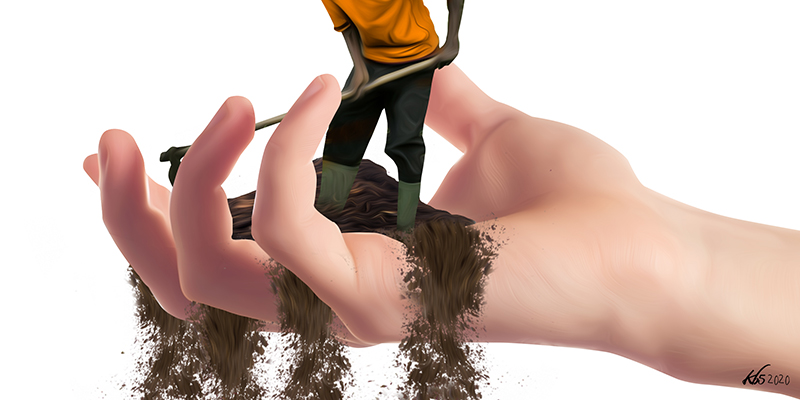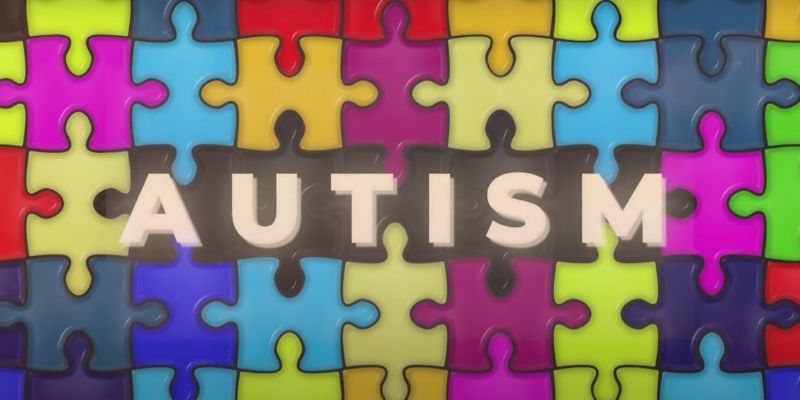“Mimi nimesema shamba ya Maasai ni ya Maasai.” I am saying that Maasailand is for the Maasai people.
As expected, this statement raised an uproar because of its tone and content. The volume of support for the speaker’s sentiments was only matched by the howls of protests at his perceived “tribalism” or “prejudice” – shop-worn fallbacks for an intellectually floundering society that is terrified of looking at itself in the mirror.
The entire sequence of events leading up to this strident declaration is symptomatic of an escapist society that continuously suffers trauma but remains unwilling to confront the source of the trauma. The reason for this is that Kenya’s formal education structures aren’t equipped (or intended) to have these discourses, so the issues remain unsaid. In this case, the issue is at hand is simply “whiteness”.
Whiteness is a mindset which decrees that land occupied by indigenous people is terra nullius (no one’s land) and is, therefore, available for occupation, acquisition or development. This term came from British settlement in Australia, which for nearly 200 years didn’t acknowledge the rights of the First Nations that preceded them.
There are obvious parallels with the acquisition of Kedong’ ranch for infrastructure development, with no regard to the needs of the many thousands of Maasai people and livestock that use it as a grazing area. This truly frightening challenge of loss of land and access to it is currently faced by the Maasai, pastoralists, and indigenous peoples in other parts of Africa, and has often resulted in violent resource conflict, leading to loss of lives and property, most notably livestock.
In Kenya, the typical responses to such crises is state violence at the flashpoint and vilification of the affected communities as “bandits” or “raiders”, accompanied by legal sanction of their leaders or representatives for their “belligerence” or “ethnic prejudice”. This simplistic approach to the issue speaks loudly of a state where the application of intellectual rigour to natural resource conservation and management is still widely regarded as anathema.
So, what is the true nature of this monster that so consistently defies our (remarkably primitive) attempts to manage its negative impacts? Firstly, the only reason why this challenge seems so intractable is the failure of our society to understand or define it. We are faced squarely with this deep malaise called settler colonialism, and the minutiae that vex us so deeply are merely the symptoms thereof.
Colonialism is a structure, not an event
What is settler colonialism?
In her 2015 paper, “Settler Colonialism”, Tate Lefevre elegantly defines settler colonialism as “a form of colonialism which seeks to replace the original population of the colonised territory with a new society of settlers. As with all forms of colonialism, it is based on exogenous domination, typically organised or supported by an imperial authority”.
The fundamental difference between settler colonialism and standard colonialism is that the latter merely seeks conquest and control, whereas the former seeks to supplant whatever preceded it, notable examples being the United States, Canada and Australia. Settler colonialism is enacted by a variety of means, ranging from violent genocide and disenfranchisement or depopulation of the previous inhabitants, to more subtle legal means, such as cultural assimilation or recognition of indigenous identity within a colonial structure, particularly as concerns land tenure.
In Kenya, the typical responses to such crises is state violence at the flashpoint and vilification of the affected communities as “bandits” or “raiders”, accompanied by legal sanction of their leaders or representatives for their “belligerence” or “ethnic prejudice”. This simplistic approach to the issue speaks loudly of a state where the application of intellectual rigour to natural resource conservation and management is still widely regarded as anathema.
The perceptive reader will notice that the enactment of settler colonialism as described herein bears an uncanny resemblance to the elaborate hoax commonly referred to in Kenya as “community conservancies”. The “recognition of indigenous identity”, for example, accurately describes the celebration of Maasai beadwork, dances and traditional garb within a colonial structure, namely, the “conservancy” within which they are not allowed to practise livestock production, unless under the structures imposed by a conservancy or a conservation NGO – the “colonial powers” in this arrangement.
The colonial powers that reside within the conservation sector often tout “alternative livelihoods”, such as tourism and beadwork, as key to the economic empowerment of pastoralist communities. But this flimsy window dressing barely hides the fraud within. The casual use of the term “alternative livelihoods” is actually a blatant admission of the intention to change what has been developed over many generations.
Livestock production, apart from being a livelihood providing an income far beyond what tourism offers, is an identity. This is what is under assault from settler colonialism – that identity that infuses pastoralists with pride, and makes it impossible to sway them with petty handouts that are de rigueur in the malarkey that styles itself as “community-based conservation”. Modern-day colonialism requires more cunning than violence, and its agents learned from their precursors that livestock is the “glue” that ties pastoralists to their homelands, the source of pride and identity that underpinned their resistance to invaders of all kinds. Maasai man with no livestock has no business in Maasailand and will probably end up working as a watchman in Nairobi, a dancer in Mombasa, or a curio seller on the streets of Cape Town.
These latter-day colonialists are also very well-read in history because they seem to understand how effectively the Native American nations were subdued two centuries ago by European invaders through the systematic elimination of their “livestock” (the bison). Once that task was completed, the impoverished and hungry Native Americans became pliable and were easily moved into small pockets of their former territories. These were called “Indian reservations” and bear an uncanny resemblance to what we in Kenya refer to as “community conservancies”, islands of contrived “self-determination” in the middle of entire landscapes annexed by outsiders.
The basis for negotiating and mitigating the plight of victims of this kind of disenfranchisement lies in understanding arguably the most profound statement on the subject: “Settler colonialism is a structure, not an event.” This hypothesis was proposed by the late Patrick Wolfe, an Australian historian who was an acknowledged authority on the subject.
Unlike other forms of colonialism, the imperial power in settler colonialism does not always represent the same nationality as the settlers. However, the colonising authority generally views the settlers as racially superior to the previous inhabitants, which may give settlers’ social movements and political demands greater legitimacy than those of colonised peoples in the eyes of the home colonies, whereas natural and human resources are the main motivation behind other forms of colonialism.
Many Kenyans and other people who were once colonised vehemently deny the profound negative impact of colonialism because they are either unwilling to accept or are intellectually incapable of understanding Patrick Wolfe’s basic hypothesis of colonialism as a structure. We can only address the vagaries of colonialism if we accept that it is a structure, rather than an event or an epoch.
The other difficulty facing Kenyans is their view of settlers as “racially superior”. In Africa, the advent of colonialism brought with it a clear colour bar, which in some countrie, actually got formally legislated and led to our initial basic understanding of “whiteness” and “blackness” as centered around our physical characteristics and peculiarities.
“Whiteness” as a policy position
However, it is now high time that natives of the Global South emerged from the Eurocentric silos of our respective reported histories to examine our condition. We urgently need to expand our temporal and geographical horizons in order to understand what ails us. We need to understand that in today’s Global South, “whiteness” is the senseless neoliberalism that only values our lands, our heritage (and even us!) through the prism of how much money a white man will pay to exploit it (or us).
The use of quotes in the word “whiteness” here is the deliberate elevation of whiteness into a policy and cultural position that transcends the race itself. “Whiteness” is not necessarily associated with skin colour, but with a worldview or a mindset. A logical question to ask at this point would therefore be: How does this hypothesis fit into the recent brouhaha pitting the Honourable Senator Ledama Ole Kina against so-called “outsiders” (mostly Kikuyu smallholder farmers) who are supposedly “taking over” Maasailand in Narok?
Put into perspective, Kenya, as a nation, is currently undergoing rapid changes driven by economic growth, misplaced economic pipe dreams, and several other factors. Any casual observer will notice that an inordinate proportion of the planned infrastructure in Kenya is targeted at the rangelands inhabited by Maa-speaking peoples and other pastoralists. The obvious and immediate impact of this is fragmentation and loss of grazing lands and stock routes. Opposition to these developments is always fronted by conservation interests who will speak ad nauseam about the loss of wildlife habitats, but won’t say a word about the negative impact on the livestock production chain or pastoralist livelihoods.
Many Kenyans and other people who were once colonised vehemently deny the profound negative impact of colonialism because they are either unwilling to accept or are intellectually incapable of understanding Patrick Wolfe’s basic hypothesis of colonialism as a structure. We can only address the vagaries of colonialism if we accept that it is a structure, rather than an event or an epoch.
The pastoralists are, therefore, caught between the hammer of infrastructure development and the anvil of avaricious conservation interests who want their land for conservation and tourism purposes. It isn’t difficult to see how this is a socially and economically perilous place to be. Both of these forces are extremely powerful, neoliberal and overwhelmingly white. To anyone who has been subject to this pressure and not yet taken the time to examine the issue critically, the reflex is to hit out at the nearest and smallest target. Sadly, these tend to be smallholder farmers from non-Maa communities who have bought land from willing sellers and are trying to produce crops for themselves and the markets, an overwhelmingly “black” activity.
Ecofascism
There is no doubt that pastoralists communities in Kenya are under relentless pressure from development and conservation interests, both of which are intent on taking control of their lands. However, the problem is a complex one, requiring a far more sophisticated approach than what we have witnessed thus far. More importantly, we need to understand that the vice squeezing indigenous peoples and their livelihoods is a global phenomenon driven by ecofascism, a global school of thought whose intellectual and financial underpinnings are often underestimated, to the detriment of indigenous populations.
The insatiable need that extractive industries have for natural resources isn’t anything new across the world, and communities in many resource-rich parts of the world have fought these industries for decades with varying levels of success. It is instructive to note here that even though these fights are sometimes violent and cost lives, they are honest fights, where the postures and needs of all the protagonists are clearly understood by all.
Apart from these conflicts, the greed of these extractive industries also led to the growth of the global environmental conservation movement and the advent of large conservation NGOs. These organisations have thrived for decades riding on a huge pool of goodwill drawn from the apparent nobility of their romanticised missions and visions. Only in the last decade or so have the white supremacist underpinnings of their images been acknowledged or confronted. For generations, art, fiction, media and even science normalised the absurd notion that wildlife in Africa is under constant peril from black Africans and that the intervention of white people is required in order to “save” this biodiversity.
This paradigm has grown and has now taken a distinct shape that can easily be recognised as ecofascism – defined by Michael Zimmerman (2008) as a theoretical political model in which an authoritarian government would require individuals to sacrifice their own interests for the “organic whole of nature”. Loosely described, this is the notion that any action in violation of human rights can be justified by the demonstration of its benefit to biodiversity or the natural environment in situ.
The pastoralists are, therefore, caught between the hammer of infrastructure development and the anvil of avaricious conservation interests who want their land for conservation and tourism purposes. It isn’t difficult to see how this is a socially and economically perilous place to be.
The majority of our society live on the periphery of these issues and would understandably be sceptical at the thought of such a flawed principle gaining any credibility or traction, but the reality is very different. Several decades of relentless promotion through the media, the arts, academia, and scientific publications has normalised an idea that is an absurdity at best and an injustice at worst.
The vilification of pastoralist communities is still the “default setting” for acquisition of their land from both sides of what is a two-pronged onslaught. “Development” and state and commercial interests maintain that pastoralism is “uncivilised” and that pastoralists’ lands need to be “developed”, while environmental and conservation interests maintain that pastoralists are “overpopulating”, “over-grazing” and “degrading” their land. This creates the absurd logic that conservationists have to somehow “take over” and “manage” these resources on their behalf (read: annex and exploit the said resources). The earlier stated position taken by capital is well known and widely acknowledged, but the position of the “eco-pirates” is often couched in feigned concern for the indigenous population, complete with local foot soldiers for window dressing purposes.
A recent incident in eastern Kenya is a prime example of how this typically plays out. On the 10th of March this year, two four-month old giraffe skeletons were found in Ishaqbin area in Garissa. The conservancy management (under the direction of the Northern Rangelands Trust) immediately issued a press release saying that the giraffes (a leucistic mother and calf) had been “killed by armed poachers” without giving any evidence whatsoever to corroborate this claim. The press release was carefully worded to imply that the two dead giraffes were two out of only three existing animals belonging to an extremely rare species. The key fact that they were simply reticulated giraffes suffering from a genetic disorder was studiously avoided. The BBC immediately started regurgitating the story through their international platforms and made a pointed reference to the fact that the giraffes “lived in an unfenced conservancy”, illustrating clearly that one of their main objectives was to justify the use of fencing here as a conservation tool.
Following the publication of the article, the expected global crescendo of condemnation for the “savage” poachers took hold. In India, for example, the BBC report was covered by the online publication Bhaskar.com and readers’ comments ranged from cursing the “poachers” to demands that they also be killed for their transgressions.
Biased reporting
Extrajudicial killings are a common human rights violation in the Global South, but this extreme reaction clearly indicates the power of biased reporting on African conservation issues. It is important to note that up to this point, the Kenya Wildlife Service has still not referred to this as a poaching incident, and its investigations thus far have not unearthed any evidence of crime. This report on “poaching” is, therefore, a fabrication by conservation practitioners on the ground that is amplified and distributed with the assistance of the BBC.
The power of this romanticised wildlife conservation narrative and its proponents cannot be over-estimated. The BBC is an outlet that is widely respected for its carefully cultivated and demonstrated penchant for objectivity, but this is instantly abandoned whenever it reports on wildlife issues in Africa. Examples of the BBC’s “whitewashing” of African wildlife reports abound, including Dr. Hans Bauer’s “discovery” of a lion population in Ethiopia (2016) and the false report by Dr. Mike Chase of an elephant “massacre” in Botswana (2018). The BBC also participated in the elaborate hoax surrounding the “extinction” of the northern white rhino with the death of “Sudan” (2018).
Interestingly, the same BBC is covering a much-touted project to find some remnant specimens of the species they reported as being extinct with such alacrity two years earlier. This unusual show of institutional weakness is actually just a submission to the needs of global capital. Ordinarily (or in a sensible world), sentiments like ecofascism are relegated to the peripheries of rational thought where other outlandish theories, like the belief in a flat earth, exist.
So, what could have driven the sudden incursion of these ideas into realms of rational thought? Increasing demand for money in the conservation world led to the professionalisation of fundraising and the engagement of marketing professionals in a field where there really isn’t any product to sell. These brilliant professionals came up with a valuable product to tap into the pockets (and guilt) of global capital for funds: a dose of guilt and an offer of self-actualisation (for a considerable financial consideration) as an antidote to the same. Suddenly, any self-respecting billionaire who could have anything had to have an environmental conservation project attached to his name. The only thing missing now was intellectual leadership with enough gravitas to take our minds off the unpleasant whiff of racism that pervaded this movement.
Enter Sir David Attenborough, with his famous breathless voice, brilliant documentaries, and Malthusian views on human population (except white people) and their impact on biodiversity.
The next challenge was capturing academia and those who saw themselves as beyond capture by images. Enter Edward Wilson, the famous Harvard sociobiologist who needed to retain some relevance in the twilight of his career by proposing the “Half Earth Theory” – the ludicrous idea that half the earth should be protected in its primordial state to save biodiversity. It is racism clothed in academic mumbo jumbo because it is obvious to any observer that the target of this “protection” is the tropics, which are home to black and brown people. There won’t be any biodiversity gains by turning London, New York (or Boston) into a protected area.
The vilification of pastoralist communities is still the “default setting” for acquisition of their land from both sides of what is a two-pronged onslaught. “Development” and state and commercial interests maintain that pastoralism is “uncivilised” and that pastoralists’ lands need to be “developed”, while environmental and conservation interests maintain that pastoralists are “overpopulating”, “over-grazing” and “degrading” their land.
With these ingredients, conservation interests built a cauldron into which the extremely wealthy are pouring startling amounts of money to subvert systems, grab lands, and plunder resources in the Global South. This money also captures the media and the arts, who cleanse all the injustices with glowing reports on conservation success or apocalypse, depending on whether white or black people are in charge.
All over Africa, the big international conservation NGOs like the World Wildlife Fund and The Nature Conservancy have captured state conservation organs using financial might conferred upon them by their corporate backers, and Kenya is no exception. Our rangelands, and the people who call them home are caught between the hammer of “white” destruction and the anvil of “white” conservation, neither of which have any time for “black” livelihoods. This can even be observed in the way the state (through Kenya Wildlife Service) is pursuing its conservation mandate. It allows “white” geothermal development and “white” music festivals in Hells Gate National Park, but “black” grazing of Maasai livestock or gathering of firewood in the same place can get one arrested or shot.
In 2017, violent clashes were witnessed when pastoralists from Samburu moved south into Laikipia with their livestock seeking pasture and routes through to grazing lands further south. The media (BBC included) talked at length about the lawlessness and violence, with numerous references to the pastoralists as “raiders” and “bandits”. What they did not mention was the fact that all of the Samburu pastoralists were coming from areas that were “community conservancies” – areas where all their dry season grazing reservoirs had been converted into conservation areas or tourism facilities.
Conservation interests must necessarily be treated with caution because they are the new face of imperialism and disenfranchisement. Awareness of this global challenge is growing through the work of organisations like Survival International. Indeed, international instruments, such as the “New Deal for Nature” merit close examination, as illustrated by Stephen Corry (2020) in the Medium journal.
Senator Ledama Ole Kina stood out back in 2017 because he was the only one who spoke out against this injustice at a time when pastoralism was a reviled and vilified livelihood in Kenya and around the world. This year he has spoken out again, and it is my fervent hope that his voice this time will initiate a conversation, because conversation is a quintessentially “black” method of conflict resolution.
This is my contribution to the much-needed conversation: Senator, we cannot afford to lose pastoralism for the sake of our identity culture or economy, but the two “white” prongs will destroy it if we let them. The capitalist development prong is harmful, but honest. You can negotiate with it because its objectives do not expressly require your subjugation. The conservation prong is lethal, because it comes smiling and it recruits your brothers to help rob you, and it will tell you that your brothers from other ethnic groups are your enemies. It is laughing as you attack smallholder Kikuyu farmers and Luo conservationists while it takes your birthright. To my pastoralist brothers, don’t be silent! Our ancestors will bless you for speaking out, and our children will thank you for it. For now, I only hope that my light has illuminated the face of your real enemy.








